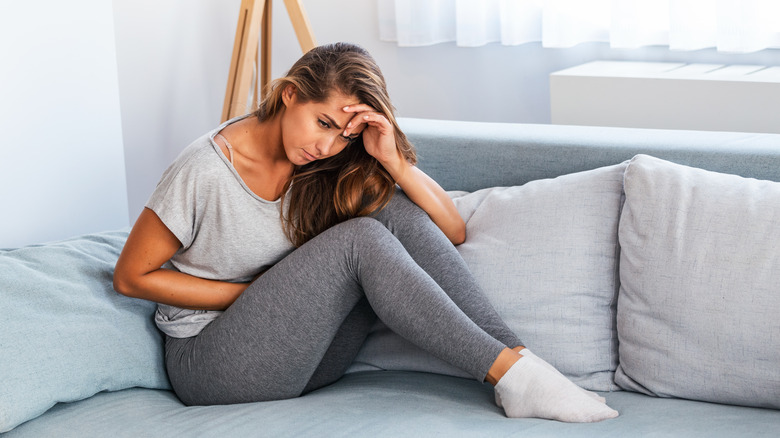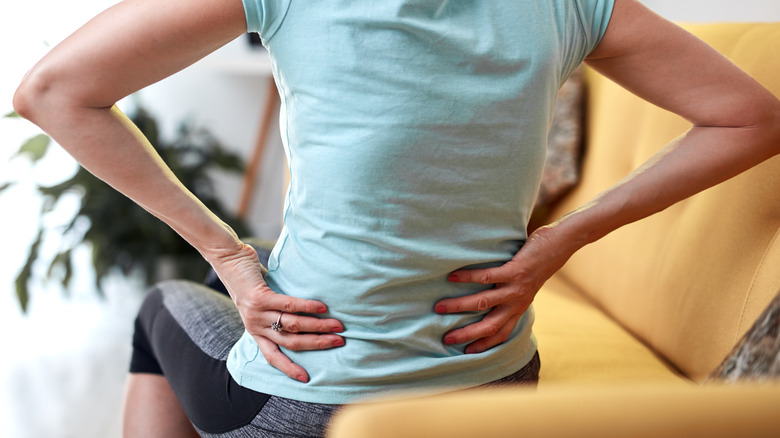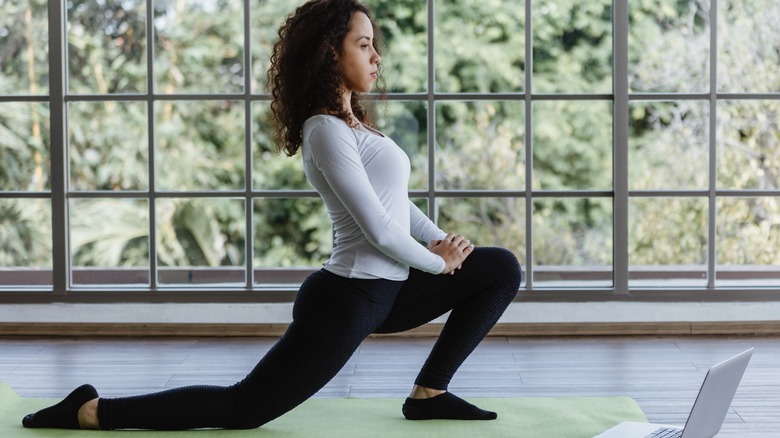Can Tight Hip Flexors Cause Digestive Problems?
Many of us engage in regular exercise to get leaner, build muscle tone, or target problem areas like the arms or thighs. The problem is that we often neglect small but important muscles, such as the hip flexors, traps, and forearm extensors. For example, the hip flexors can become tight due to prolonged sitting, which can lead to lower back pain. More than two-thirds of those who sit longer than eight hours per day experience this issue, according to clinical evidence published in the International Journal of Environmental Research and Public Health.
The hip flexors include the psoas major, rectus femoris, iliacus, pectineus, vastus lateralis, and other small muscles, explains Physiopedia. Their role is to flex the hip, extend the knee, and keep you upright, among other functions. Prolonged sitting and a sedentary lifestyle, in general, can affect the iliacus and psoas muscles, which form the iliopsoas. Over time, these factors may lead to an excessive curvature of the spine, difficulty walking, and increased injury risk.
Tight hip flexors can also impact digestive health due to their proximity to the pelvic region. On the positive side, regular stretching can loosen up these muscles and keep them functioning optimally.
The surprising link between tight hip flexors and poor digestion
Constipation and other digestive complaints are not always related to what we eat. A sedentary lifestyle, pregnancy, stress, and certain medications can affect digestion, too, explains the Cleveland Clinic. In some cases, these issues are due to an underlying problem, such as tight hip flexors.
The psoas muscle is traversed by several lumbar nerves and blood vessels, notes InSync Physiotherapy. If this muscle is tight, it can affect blood flow to your legs and internal organs and interfere with the nerve impulses in those tissues. Tightness in the psoas can also put pressure on the internal organs, decreasing the space between them. These factors can trigger or worsen constipation, menstrual cramps, and sexual problems.
The relationship between tight hip flexors and poor digestion goes both ways, according to Aletha Health. If your digestive system isn't working properly, the iliopsoas muscles can become tight and put extra pressure on your intestines, causing stomach pain and other related problems. What's more, tightness in the psoas can contribute to irritable bowel syndrome and acid reflux.
Clinical evidence supports these findings. For example, a 2020 study found that massaging tight or tender psoas muscles may reduce or eliminate stomach pain, nausea, and digestive distress, reports the International Journal of Therapeutic Massage and Bodywork. About 75% of patients remained symptom-free, and 18% experienced significant improvements after just five massage sessions. Scientists conducted the study on children, but previous research reported similar findings in adult patients.
Try these stretches for tight hip flexors
Having tight hip flexors can wreak havoc on your digestive health, but there are ways to address this problem. For starters, commit to regular stretching or try foam rolling, postural exercises, or massage therapy. The International Sports Sciences Association (ISSA) recommends using a foam roller to loosen up these muscles. From a forearm plank position, place the roller under your left hip and bend the opposite leg to the side for support. Roll up and down with a slow, controlled motion, and then repeat on the opposite side. Focus on the areas that feel the most pressure. Alternatively, use a longer foam roller to massage both hips at once.
The ISSA also recommends the pigeon pose, a yoga posture that opens the hips and stretches the psoas. You may also try the butterfly stretch, a seated yoga pose that boosts hip mobility. To strengthen the hip flexors, add glute bridges, mountain climbers, and single-leg squats to your workouts.
The Cooper Institute suggests using a medicine ball to loosen up the hip flexors. Simply place it under your hips and then roll over it from a plank position. After that, get on your knees and bend the right leg to 90 degrees. Push the left hip and thigh forward while squeezing the glutes. Lift your right arm without moving the hips. Maintain the contraction for at least 10 seconds, relax, and start all over. Repeat a few more times and then switch sides.


